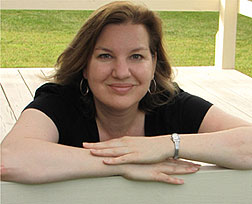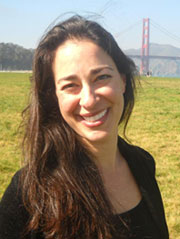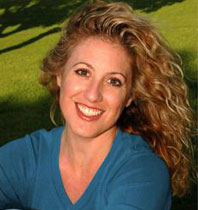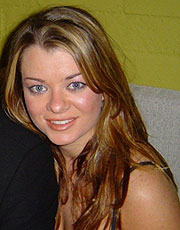verywhere you turn, everyone’s talking about e-books. Some people claim they’ll never give up holding a copy of a printed book in their hand; but many more readers have embraced this technology, bought an e-reader, and are madly downloading e-books. Authors are realizing this is a new market of readers to reach, and many of these readers will gladly take a chance on a new author in a favorite genre at the price of $2.99 an e-book, instead of the traditional pricing of $25.00 (or more!) for a hardcover.
Many of these authors are also self-publishing their e-books. They are passing up the traditional publishing houses and making more from their royalties. With little overhead for producing a book and no publisher or agent to pay, most of the sales money goes straight to them. To stay alive, traditional publishers are jumping on the e-book bandwagon, too, and it’s creating a whole new atmosphere of exciting opportunities for writers and readers.

“I now make a living writing fiction, something I’d never have been able to do without e-books.”
(Photo: Karen McQuestion)
Take author, Karen McQuestion, for example. She’s the author of five books: two adult, two YA, and one children’s picture book, and living the dream so many of us are working toward. All five of her books started out as self-published on Amazon for Kindle. Then they were picked up by Amazon’s publishing house, AmazonEncore, who released them in paperback. Now, she’s being offered a contract by Houghton Mifflin Harcourt for her novels, A Scattered Life and Easily Amused.
McQuestion chose Kindle because it was free and fairly easy to use to create an e-book. She liked the idea that her work was finally out there for the public to see and that she didn’t have to sell physical copies. It fit her personality better to market her books online.
“I’d hoped to make enough for an occasional nice dinner out, but my sales have far exceeded my expectations,” McQuestion said. “I now make a living writing fiction, something I’d never have been able to do without e-books.”
Bella Andre, who also writes under the pseudonyms of Bella Riley and Lucy Kevin, made over $115,000 in the first quarter of 2011 and sold over 56,000 books. She has several titles, which help her numbers; but this amazing success landed her story in The Washington Post. The Look of Love, the first book in a new contemporary romance series, hit #19 on the Barnes and Noble bestseller list the first week it was released.
Andre finds the current market very exciting. “As someone who has a foot in each world (self-publishing and New York publishers), I feel really lucky to have so many opportunities to get my stories out to my readers. In the past year, I’ve met so many wonderful people, both online and in person, because we all love the same thing—books!”

“As someone who has a foot in each world (self-publishing and New York publishers), I feel really lucky to have so many opportunities to get my stories out to my readers.”
(Photo: Bella Andre)
So, how did McQuestion, Andre, and other authors find so much success as e-book writers? How did readers find these books and become fans? Why are many writers choosing this non-traditional route to find an audience and becoming overly successful in the market?
Marketing Ideas for E-books
YA fantasy author Megg Jensen, who has written Anathema, Oubliette, and Sleepers, created an e-publishing company, DarkSide Publishing, with three other writers. “While many consider e-publishing a solitary business, it shouldn’t be.” Jensen said the publishing company started when one of her writing friends e-published a book and encouraged her to do the same. “I was hesitant at first; but within a couple months, after soul-searching and studying the publishing industry, I agreed to join her.”
They approached two other writers, and thus formed what she calls “a think tank in children’s e-book literature.”
With Darkside Publishing, each author retains all rights for her books; and along with this privilege, each writer also gets all the profits—as well as the risk. “We advise each other on everything from editing to formatting to promotion. DarkSide Publishing is not incorporated, nor does any money exchange hands. We share resources to maximize the success of each novel. Each author is the publisher of her own books, but we use the DarkSide name for brand recognition.”

“You need a well-thought-out marketing plan and the diligence to follow through with it.”
(Photo: Annette Fix)
Former WOW! senior editor Annette Fix, whose memoir The Break-Up Diet started as a self-published print book in 2008, created an e-book version in April 2011. She says that e-book authors need “perseverance and a plan. You need a well-thought-out marketing plan and the diligence to follow through with it.” She suggests that authors who want to self-publish should start with an e-book version in today’s market, and then possibly set up their book POD (Print On Demand) through a company like Lightning Source. Some readers will still prefer to buy a print copy, and writers can also sell these hard copies at book signings, conferences, and online.
If you have an e-book and no print copies and you are going to a promotional event such as a book festival or writers’ conference, Fix suggests creating a BLAD. This is a booklet that shows the book cover, blurbs, the table of contents, and at least one sample chapter. Prospective readers can view the BLAD at the event to get a feel for the e-book, and then purchase and download a copy of the book when they get home, if they like what they read in the BLAD.
H.P. Mallory is an urban fantasy and paranormal e-book author, who also started with self-published e-books, and is now receiving a contract from Random House for three books in her Jolie Wilkins series. She is currently working on a how-to book titled, How to Sell 200,000 E-books, that should be out by the end of the summer. She believes her success is due to word of mouth. When she first marketed her books, she contacted hundreds of blog book reviewers, and she was very active on the Nook and Kindle forums.
“E-book authors must realize that they have to take sole responsibility for marketing their books,” Mallory said. “If they don’t get the word out there, no one else will.” She thinks the two best tools that e-book authors can use to get their books noticed are the two tools that she used herself—contacting people, such as book bloggers, who will spread the word about a book and creating a content-rich website that lets readers know about the author and her books.

“E-book authors must realize that they have to take sole responsibility for marketing their books. If they don’t get the word out there, no one else will.”
(Photo: H.P. Mallory)
Andre stressed the importance of the cover and the story for creating sales. An attractive cover can draw a new reader to an author, and a well-written and entertaining story will make that reader come back for more books by the same author. She also thinks having a personal relationship with readers equates to big sales numbers, and authors can easily do this now through Twitter, Facebook, and their blogs.
McQuestion agrees, and she has suggestions for people who aren’t seeing success with e-books. “Go back to the basics. Reassess your story, cover, formatting, and book description. Don’t be afraid to make changes, if need be.” She also suggests checking out The Writer’s Café at Kindleboards.com, which is populated by authors who share their knowledge and experience in the e-book world.
All of the authors agree that there’s not much difference between marketing a traditional print book or a self-published e-book. In today’s market, even with a New York publisher, authors—unless you’re J.K. Rowling or Stephen King—have to do a majority of the marketing themselves. Here are some more ideas for e-books and hard copies, too:
- Make friends with book bloggers. Mallory contacted hundreds of bloggers; Jensen said that she has become close friends with many. These blogs are where readers are flocking to get ideas for what to read next, instead of going to the local bookstore clerk or librarian. If a book blogger has read your book and likes you and your work, she will most likely recommend you to her readers.
- Be personable and be yourself on the social networking sites. (Social networking is a must—most readers of e-books are technologically savvy.) Let readers connect with you as a person. Make sure you’re not always just marketing your books and asking people to buy your stories. Be generous and be willing to discuss your characters and plots. It will make readers want to buy more of your work.
- Learn to use Twitter tools, such as hashtags, and take part in chats. Jensen uses #kindle and #nook often in her tweets because she figures the “average Twitter user is more technology-friendly,” and they’ll take a chance on her e-books.
- Give out free samples of your e-book for bloggers and reviewers and as contest prizes. It’s much easier and cheaper to give away a free copy of an e-book than a print copy.
- Keep the price of your e-book low. Go to Amazon.com and Barnes and Noble.com, and study the e-books in your genre. What are most of the authors selling them for? You will notice the trend is to sell between $2.99 and $4.99. Many authors start a new series or trilogy at $0.99 to get readers to take a chance on a new writer without much risk.
If you are reading this article, and getting excited—great! Get started on an e-book idea today. But if you’re like many writers and readers, change is hard; and it’s difficult to let go of wanting to sign hundreds of copies of your bestseller at your first book signing at your local bookstore. Our e-book expert authors weighed in on the future of publishing and why they chose to go the route they have.

“Why people get so worked up about e-books is beyond me. It’s simply another choice that we will all learn to adapt to.”
(Photo: Megg Jensen)
Jensen has a great perspective. “Technology is all about advancing. Would you like to go back 50 years? Toss out your HDTV and video games? Give up the medical treatments that save lives? Of course not. So why people get so worked up about e-books is beyond me. It’s simply another choice that we will all learn to adapt to.”
Mallory believes e-books are here to stay, but that print books will never completely disappear. Fix agrees with both Jensen and Mallory. She said that e-books will eventually take over the print market, just like downloading songs off the Internet has replaced buying an album from a music store. “Like vinyl records, print books will become a novelty for future generations and a cherished piece of history for collectors,” Fix said. “Change isn’t coming; it’s already here.”
Andre said she hopes that e-books and print books will co-exist in the future, and she’s glad for all the different choices out there for readers right now. She’s also noticed that it seems like people are reading more than ever and talking about books like crazy. If you’re an author, now is the time to get your work out there and in front of an audience—in whatever format you can.
No matter which sells more in the future, the fact is right now, these five women are having success with e-books. They are gaining readers, publishing more books, making money, and being offered contracts for their self-published work. They have used new marketing ideas, such as starting a publishing company and going on blog tours, and the old standards of “word of mouth” and creating a network. As our authors mentioned here, e-books are here to stay, so embrace this technology and use it to get your work out in front of your readers.
***

Margo L. Dill is a freelance writer, editor, speaker, and teacher, living in St. Louis, Missouri. Her work has appeared in publications such as Grit, Pockets, True Love, Fun for Kidz, Missouri Life, ByLine Magazine, and The Chicago Tribune. She is a columnist, instructor, and contributing editor for WOW! Women On Writing. She is the memoir editor at High Hill Press and the assistant editor for the Sunday Books page in The News-Gazette. Her first book, Finding My Place, a middle-grade historical novel, will be published by White Mane Kids. High Hill Press will publish her children’s picture book, Lucy’s Listening. She writes a blog called, Read These Books and Use Them, for parents,
teachers, and librarians. She owns her own copyediting business, Editor 911, and is an instructor for the Working Writers Coaching Club and the WOW! Women On Writing Classroom. She loves speaking to writing groups, teachers, and young writers and has presented several workshops to all ages. When she's not writing or speaking, she loves spending time with her husband, stepson, daughter, and two dogs—Chester, a boxer, and Hush Puppy, a basset hound. You can find out more about Margo by visiting her website: www.margodill.com.
-----
Enjoyed this article? Check out these related articles on WOW!:
Blogs, Twitter, Websites & More: Connecting with Young Readers through Social Media
Time to Twitter: Using Social Media to Further Your Career
Real Stories of Authors on a Budget: Promotional Gimmicks
What Every Website Needs: A Checklist for Authors
Book Trailer Basics: How to Create Your Own Book Trailer and Bring Your Story to Life
Get Your Marketing Plan in Shape: How to Put Muscle Into a Marketing Plan
How to Attract New and Repeat Visitors to Your Blog
Marketing Your Book: Interview with Penny Sansevieri
Getting Your Brand On: Interview with Shelli Johannes-Wells
How to Create Quizzes that Sell Your Book
How to Promote Yourself through Teaching
Marketing Madness
How to Get Your Book Reviewed Online
Wrangling Your Readers Online